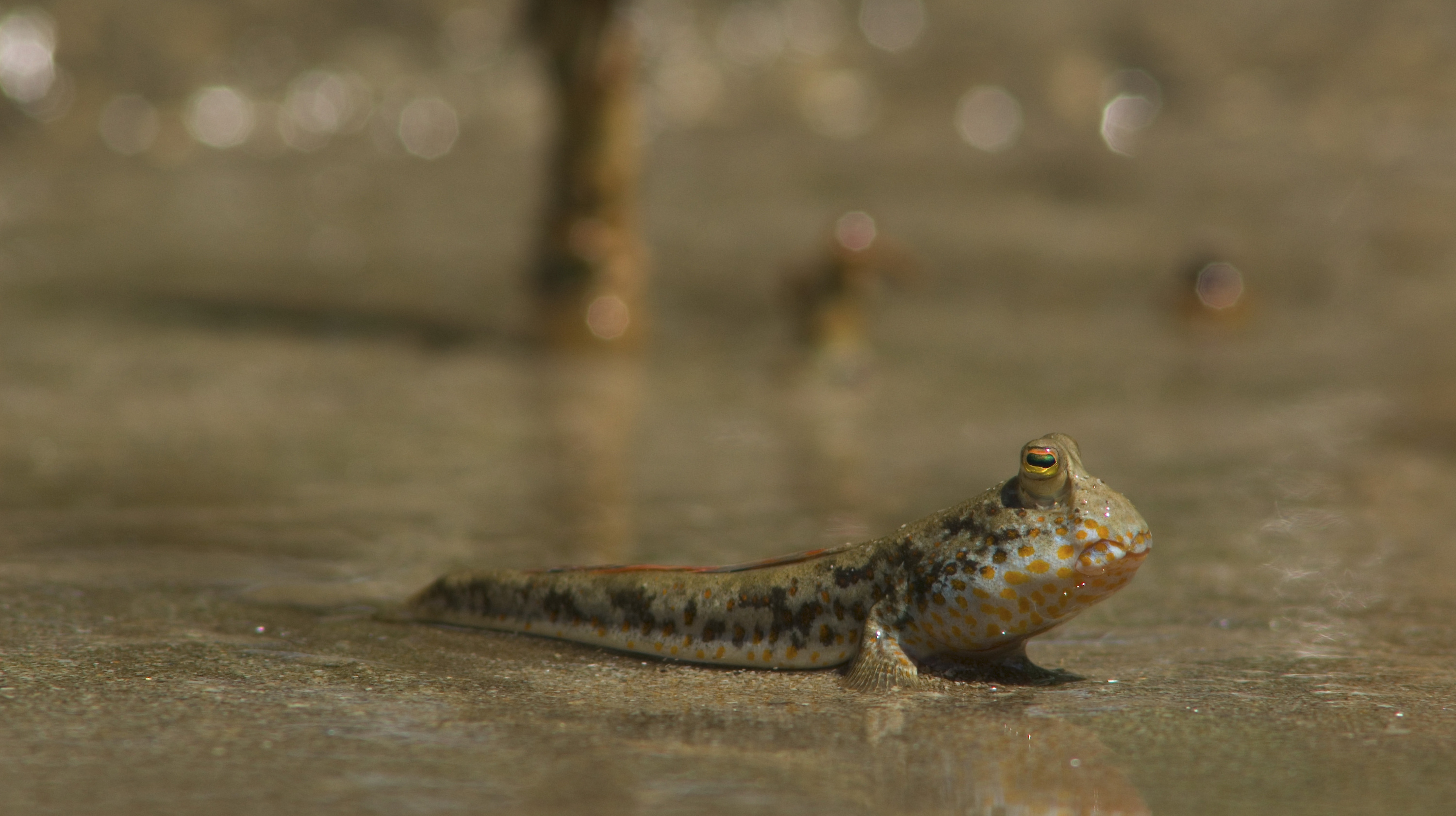Weirdo blinking fish could hold the secrets to how our ancestors evolved to live on land, new study reveals
The bulbous-eyed mudskipper could offer key clues about how our fishy ancestors first made the leap to land.

An ugly blinking fish could hold the secret to how ancient animals evolved the ability to live on land, a new study has found.
Mudskippers, a subfamily of fish that live both on land and in the water, are the only fish that can blink, and they evolved this ability independently from our ancestors — a concept known as convergent evolution.
Scientists think that blinking evolved in land animals when they made the transition from the oceans roughly 375 million years ago. Therefore, studying this example of convergent evolution has offered clues as to how our primordial ancestors first took to Earth's shores. The researchers published their findings April 24 in the journal Proceedings of the National Academy of Sciences.
Related: Does evolution ever go backward?
"Animals blink for many reasons," co-author Thomas Stewart, an assistant professor of biology at Penn State, said in a statement. "It helps us keep our eyes wet and clean, it helps us protect our eyes from injury, and we even use blinking for communication.
"Studying how this behavior first evolved has been challenging because the anatomical changes that allow blinking are mostly in soft tissues, which don't preserve well in the fossil record," he added. "The mudskipper, which evolved its blinking behavior independently, gives us the opportunity to test how and why blinking might have evolved in a living fish that regularly leaves the water to spend time on land."
To study the blinking of the mudskipper — whose bulbous, frog-like eyes retract into a membrane in its head when the animal needs to perform the action — the researchers filled a mudskipper tank with high-speed cameras to see how the semiaquatic weirdos moved between the water and the shore. In the wild, mudskippers typically live around tide pools and, when not taking a dip, walk across land on their fins.
Get the world’s most fascinating discoveries delivered straight to your inbox.
The researchers tracked the locations in which the fish blinked. They found that, while submerged, the mudskippers barely blinked at all but when in the air, they blinked often. When the researchers increased the airflow and the subsequent rate of evaporation in the tank, the mudskippers began blinking more frequently. The fish also blinked to remove debris from their eyes.
"We found that, just like humans, mudskippers blink more frequently when confronted with dry eyes," lead author Brett Aiello, an assistant professor of biology at Seton Hill University in Pennsylvania, said in the statement. "What's incredible is that they can use their blinks to wet their eyes, even though these fish haven't evolved any tear glands or ducts. Whereas our tears are made by glands around our eyes and on our eyelids, mudskippers seem to be mixing mucus from the skin with water from their environment to produce a tear film."
To understand how the freakish fish evolved the ability to blink, as well as retrieve clues on how our fishy ancestors did the same, the researchers compared the mudskipper's anatomy with those of close relatives that don't blink. They found that the creatures' eyes had evolved to rest above a socket covered in a stretchy membrane called a dermal cup and that they were sucked downward into this cup to conduct the blink, which lasts about as long as a human's blink.
The muscles that performed this blinking action are not new but rather a simple rearrangement of existing ones. Therefore, the researchers think ancient fish likely didn't need complex adaptations to begin blinking. Instead, the fish probably achieved the feat with a shuffling of their rudimentary biology.
"The transition to life on land required many anatomical changes, including changes for feeding, locomotion and breathing air," Stewart said. "Based on the fact that mudskipper blinking, which evolved completely independently from our own fishy ancestors, serves many of the same functions as blinking in our own lineage, we think that it was likely part of the suite of traits that evolved when tetrapods were adapting to live on land."

Ben Turner is a U.K. based writer and editor at Live Science. He covers physics and astronomy, tech and climate change. He graduated from University College London with a degree in particle physics before training as a journalist. When he's not writing, Ben enjoys reading literature, playing the guitar and embarrassing himself with chess.


